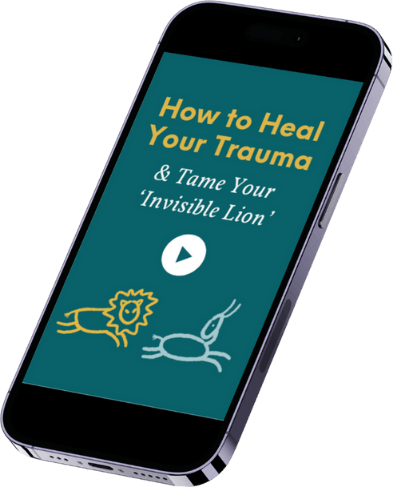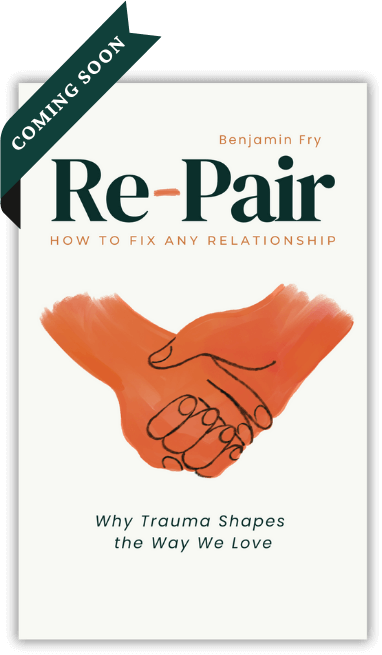Blog/Video #13
When we look at how well our nervous systems are functioning, we start to see that there are three kinds of responses to the stuff that life throws at us. If we are lucky, or feeling well regulated, or the stimulus is not a trigger to our baggage, then we might respond just right. This is very functional. It helps us to solve problems, to get on with people and to make our world safer and more productive. However, if we are dysregulated and carrying baggage from unfinished reactions to earlier threats, then we might over-react. This can lead to arguments, escalations of conflicts before they are necessary, and thus make situations more dangerous, or problems less easy to solve. At the extreme of this spectrum, we might want to explode so much that we actually find ourselves to be the danger, and when this happens we shut down. Once we shut down, we can’t protect ourselves from anything, or solve any problem. That’s not helpful either.
So we live in reaction to the world in any one of three states; over-reacting, under-reacting and sometimes getting it just right, the Goldilocks response. When we draw these responses, they look like this, and sometimes we can give them numbers too, saying the trigger is a 3 out of 10, and these three reactions are 9/10, 0/10 and 3/10.
Over-reacting:

Under-reacting:

Just right, or a Goldilocks reaction:

In the above diagrams, your baggage is represented by the red squiggle. The green arrow is a trigger coming at your baggage, and the red arrow is your output, your reaction. In the first diagram – over-reacting – the output or reaction is greater than the intensity of the trigger. In the second – under-reacting – there is little to no output, which is not at all healthy for the nervous system. In the third diagram – the Goldilocks reaction – the reaction is proportionate to the trigger.
This is a given, on a daily basis. It is both how we are and how the world is around us. So the question is, what can we do about it. It helps to get really clear about the three stages of the process, because each of them can be targeted to change this situation for the better.
The trigger arrives from the outside world. The baggage is always with us, our unfinished business. And the reaction is the combination of the two, an involuntary result of the trigger hitting the baggage.
Our goal is also very simple. Whenever we encounter a trigger of 3 out of 10, we want our response to be a 3 out of 10 too. We can almost define our behavioural recovery as a constant search for Goldilocks among the rubble of our triggered baggage. In some ways it wouldn’t matter if we were dysregulated, or carrying a ton of baggage, if only we could find some way to make sure that our responses to life were always just right. It would be a good start. And that’s where boundaries come in.
Boundaries are about triggers
We begin at the beginning. This problem starts with a trigger. It’s a 3/10 and results in an over-reaction from us, say a 9/10, or, perhaps even worse, a 0/10 if we can’t even react. So it is logical that we would feel better, do better and have a better chance of getting a grip on our reactions if the trigger was less. If the 3 was a 2, or a 1 or even less. This requires us to do something to tone it down, to lessen the impact of the trigger as it arrives at our nervous system; to put up a kind of force-field; some kind of boundary between the trigger and ourselves.
Now this tells us what a boundary is, and what it is for. It is really important to note at this point that the boundary is about me. It is derivative of what triggers me. It is not about you, or the world, or the trigger. It is all about my baggage and lessening the impact of the trigger on it.
One of the biggest mistakes that people make in behavioural health is to talk about boundaries, and their failure, as if that is someone else’s problem or responsibility. It isn’t. My boundaries are about me, and mine to manage. If you don’t want to play ball with me, that’s not your problem, it’s mine. It’s no use me saying things like “you don’t respect my boundaries”. The truth is I don’t respect my boundaries if I continue to let you trigger me.
This also tells us what the boundary should be. It is simply anything which reduces the trigger. So let’s imagine that I get triggered at work when my boss is critical of my work. What should I do? It’s very tempting to want to over-react and tell him to stuff his job. Or more usual to under-react, suck it all up and then go home miserable. And a lot of people will try to avoid these outcomes as they become more self-aware, but then fall into this terrible trap of making their boundaries his problem, telling him how to behave and castigating him if he doesn’t take the instruction. But no, that’s not what boundaries are, or are for.
What you want it this, a shield for your baggage:

And the way you get it is by understanding that it is built in reverse, from the baggage back to the trigger. So a boundary is a way of acknowledging the baggage, sharing it with others, and asking for their collaboration in helping you to protect it. Thus, the right way to deal with the critical boss, if you can bear it, is to lead with the baggage, rather than an attack on his behaviour.
“I have a lot of stuff left over from my childhood about being told I was wrong, so I find that when you criticise me, my reactions are all over the place. This makes me less receptive to understanding your point, less productive, and less motivated to be a team member. So, if you want to help me, I’d really appreciate it if you could give me gentler feedback.”
This is much harder to say than “stop being a dick”, but it’s healthier, more likely to be listened to, and accurately asking for what your nervous system really needs, rather than demanding someone else to be different. It sets both you and your boss up to succeed.
You can download this post in a handy 2-page PDF to print and share with friends, family, clients or colleagues. Follow this link to download now.
You can buy a copy of The Invisible Lion now on kindle or paperback from your local Amazon store. Just click here to buy now.






